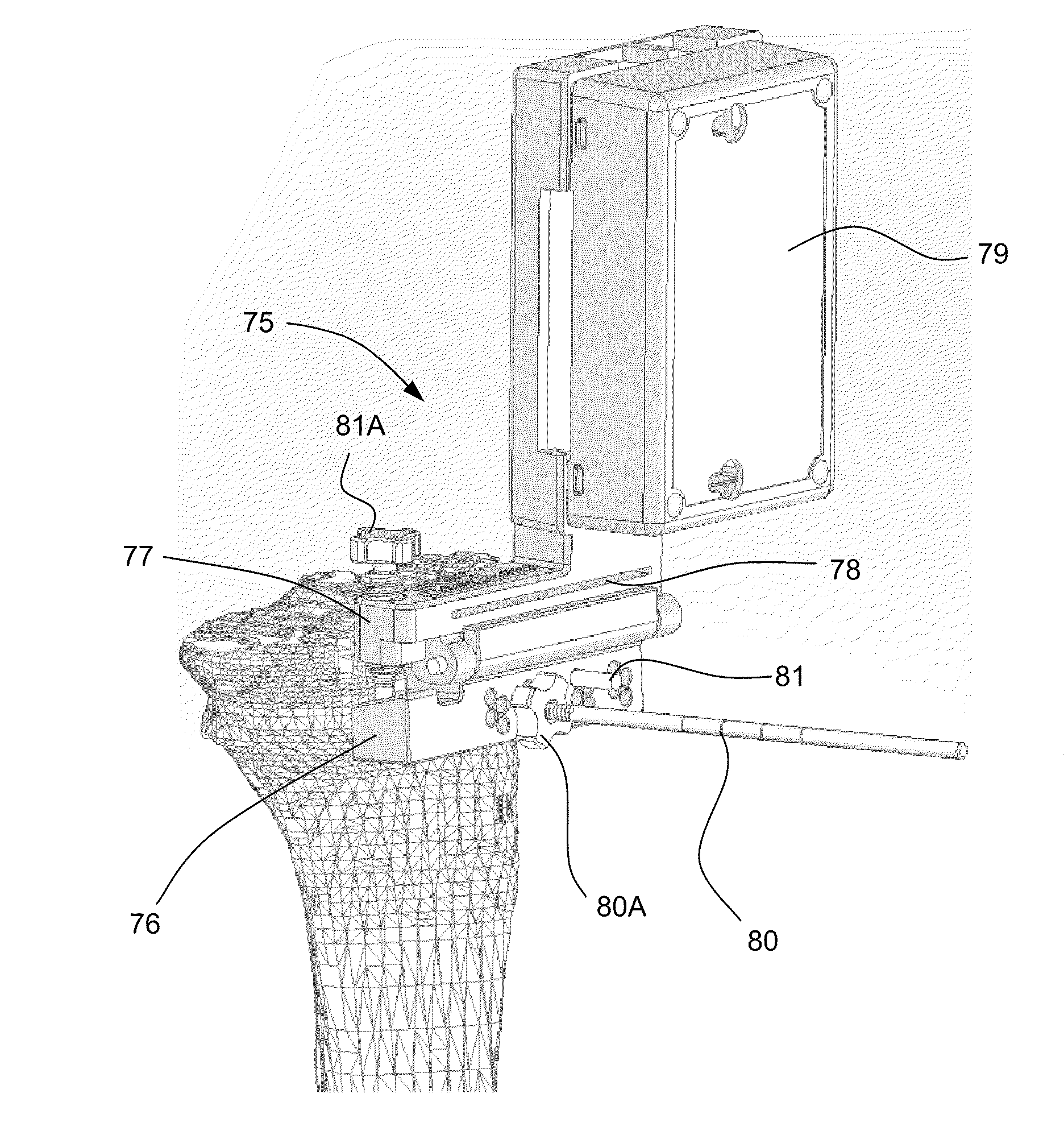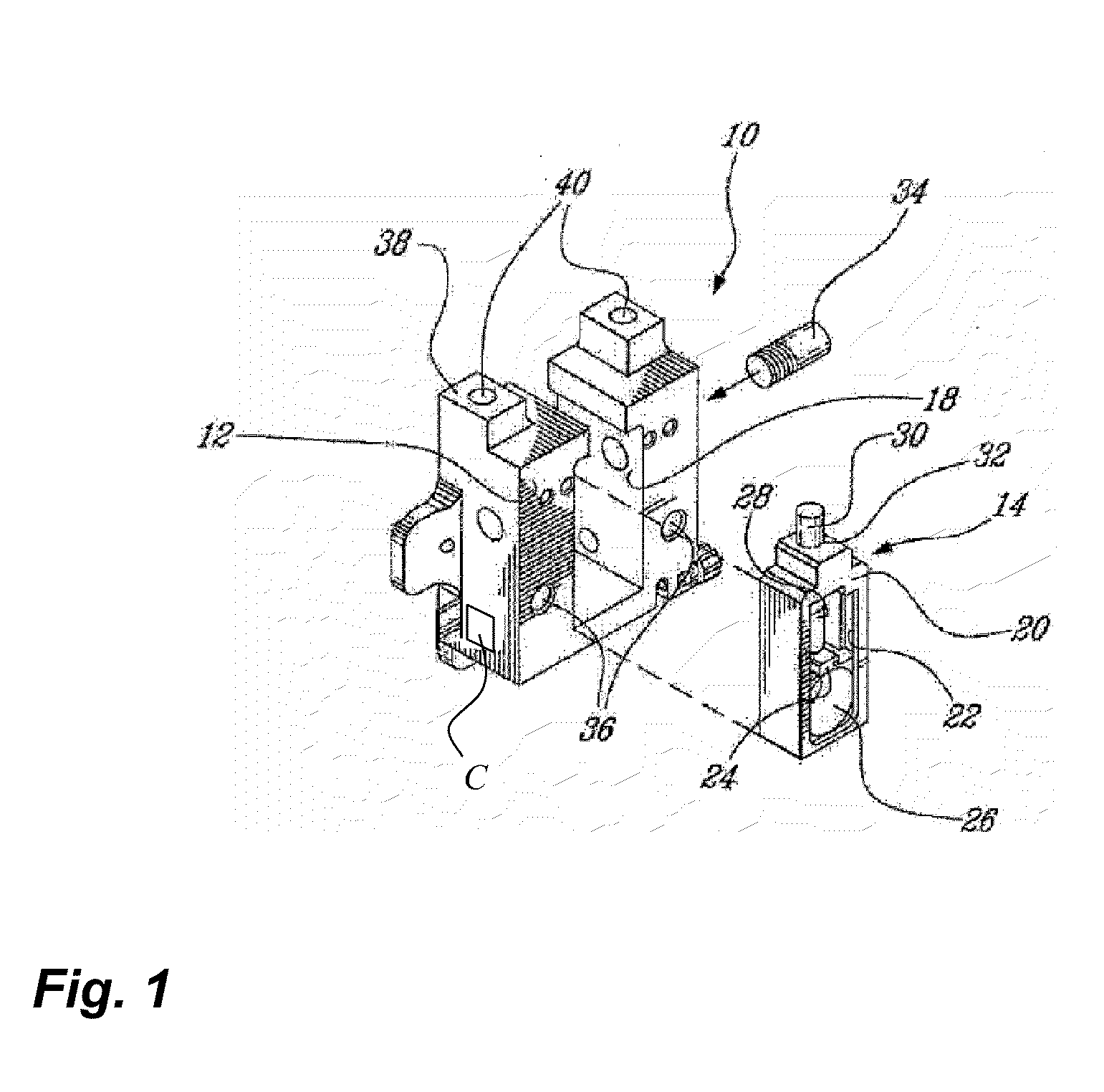Method and system for planning/guiding alterations to a bone
a technology of bone marrow and bone marrow, applied in the field of computer assisted surgery systems, can solve the problems of large assembly, obstructive, and inability to provide active transmitters for passive tracking systems, and achieve the effect of reducing the volume of current optical or radio frequency sensors in disposable instruments (such as cutting guides) and reducing the volume of the system
- Summary
- Abstract
- Description
- Claims
- Application Information
AI Technical Summary
Benefits of technology
Problems solved by technology
Method used
Image
Examples
first embodiment
[0047] an additional tracking member is temporarily secured to the femur at the entry point of the mechanical axis. By the weight of the patient, the pelvis of the patient is deemed to be in a fixed spatial position and orientation. The tracking member at the entry point of the mechanical axis, also known as a spike tracking member, is of the type equipped with tracking circuitry providing six-degree-of-freedom tracking data. With the tracking member at the entry point, a given motion about the center of rotation of the femur in the pelvis is performed (e.g., in a freehand manner). The motion can be continuous, or decomposed in several displacements with stable positions in between them. The tracking data resulting from the given motion is used to calculate a position and orientation of the center of rotation of the femur. The mechanical axis is then defined as passing through the center of rotation and the entry point (i.e., the spike tracking member). The orientation of the mechan...
second embodiment
[0050]In a second embodiment, the spike tracking member has tracking circuitry producing at least two-degree-of-freedom tracking data and linear accelerations along three orthogonal axes. The spike tracking member 51′ (FIG. 15) is positioned at the entry point of the mechanical axis on the femur. In order to find the center of rotation, accelerative motions are performed according to a freehand or constrained trajectory for the distal part of the femur with respect to the immoveable pelvis. This trajectory can be spherical, linear or any other suitable pattern. An orientation of the mechanical axis may then be computed from the tracked accelerations and / or orientations of the femur. Once the orientation of the mechanical axis is known, the orientation of the mechanical axis is transferred to tracking member 10′ and the spike tracking member is removed, and the tracking member 10′ is tracked so as to follow the orientation of the mechanical axis of the femur. As an alternative to hav...
PUM
 Login to View More
Login to View More Abstract
Description
Claims
Application Information
 Login to View More
Login to View More - R&D
- Intellectual Property
- Life Sciences
- Materials
- Tech Scout
- Unparalleled Data Quality
- Higher Quality Content
- 60% Fewer Hallucinations
Browse by: Latest US Patents, China's latest patents, Technical Efficacy Thesaurus, Application Domain, Technology Topic, Popular Technical Reports.
© 2025 PatSnap. All rights reserved.Legal|Privacy policy|Modern Slavery Act Transparency Statement|Sitemap|About US| Contact US: help@patsnap.com



